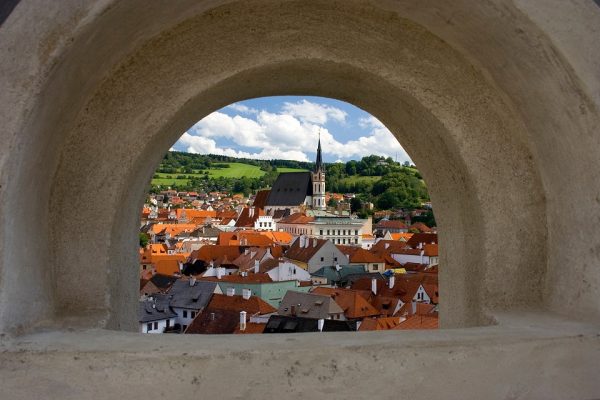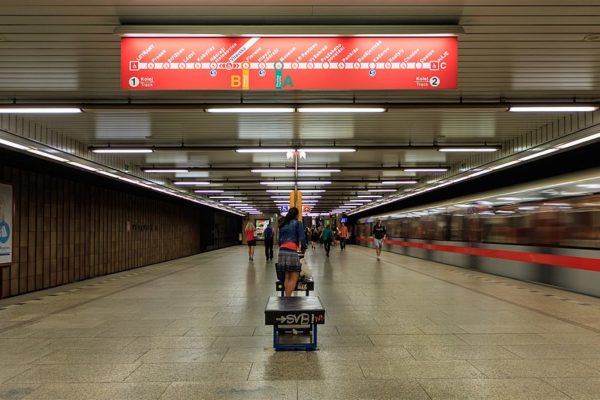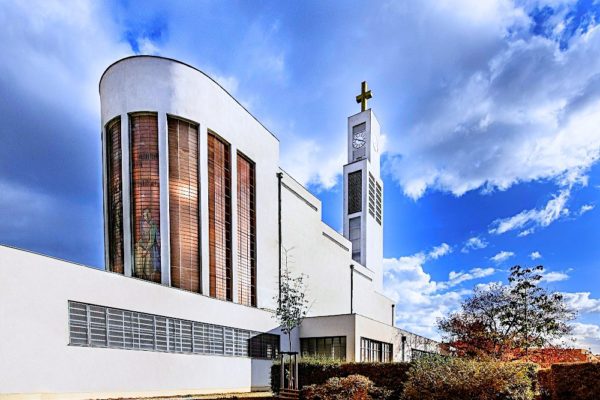Antonín Langweil (June 13, 1791 – June 11, 1837) was a Bohemian painter, librarian, lithographer, and model maker. He created what’s famously known as the model of the city of Prague.
Langweil’s model of Prague represents the city from the years 1826-1837.
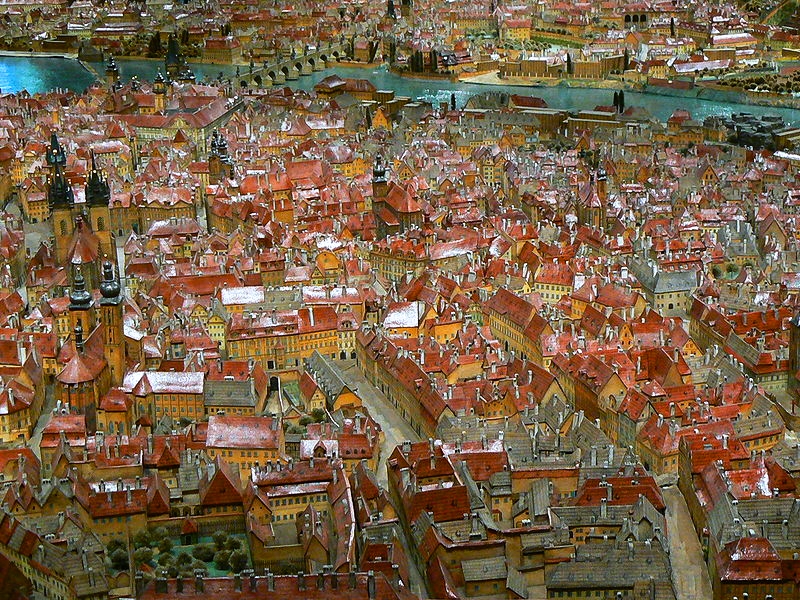
It is a unique testimony to the form of the Old Town, Lesser Town and Prague Castle before the reconstruction of Prague in the late 19th and early 20th centuries.
This exquisite model was handmade from cardboard mounted on wood.
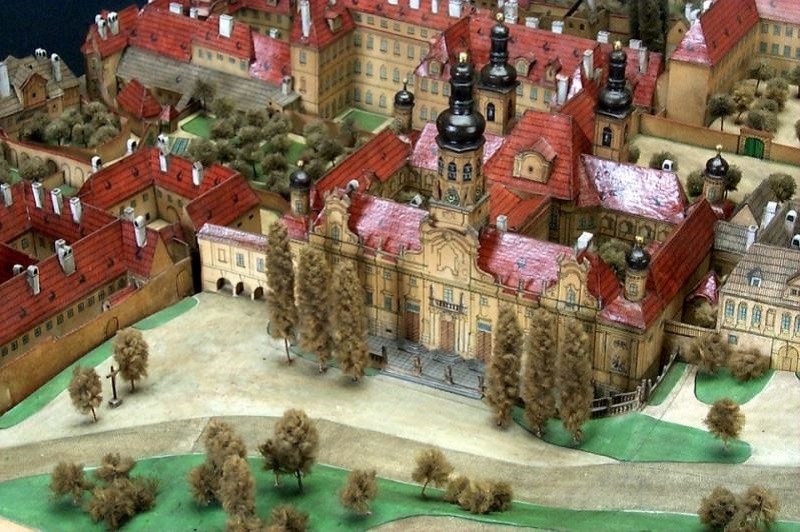
The model is huge at approximately 20 m² (215 square feet).
It shows the historical center of Prague in very detailed form, how it looked a hundred and fifty years ago.
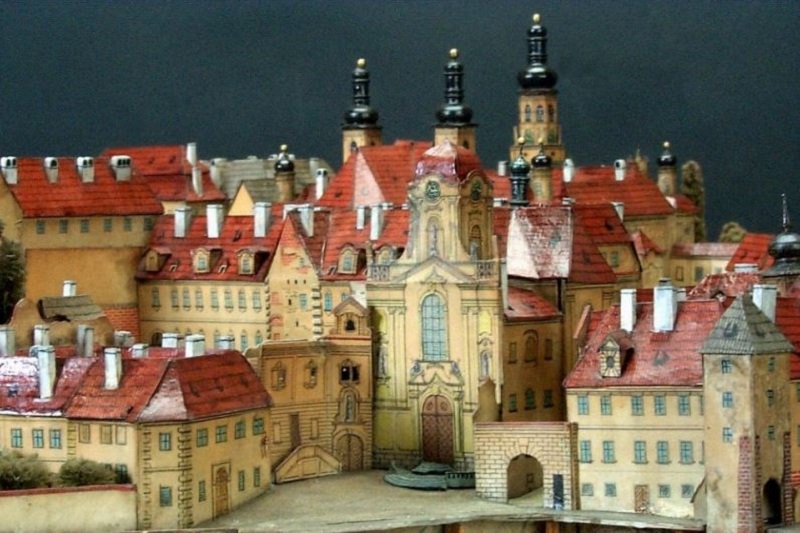
It includes hundreds of demolished buildings that no longer exist in the former Jewish Quarter and Old Town.
The Langweil model of Prague as a three-dimensional illustration of the city is a unique work of art unlike any other in the world.
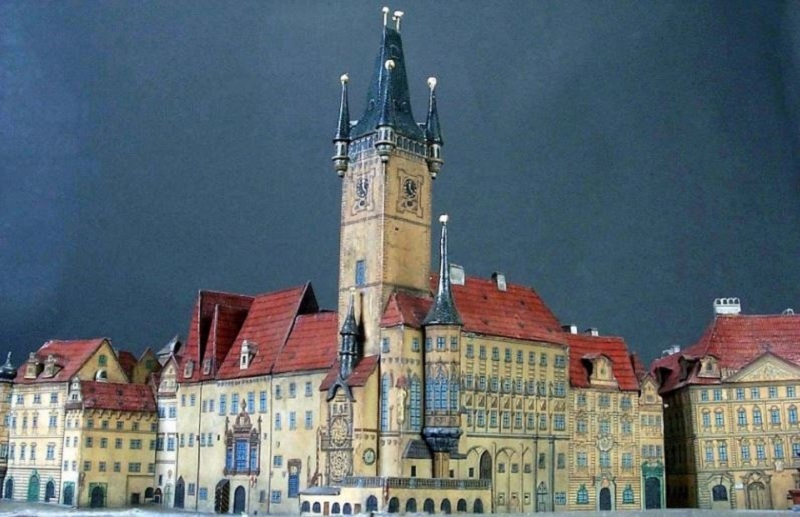
There are more than 2,000 buildings on the color model which is captured at a scale of 1: 480.
The model shows all the details of the decoration of facades and detailing courtyards, gardens.
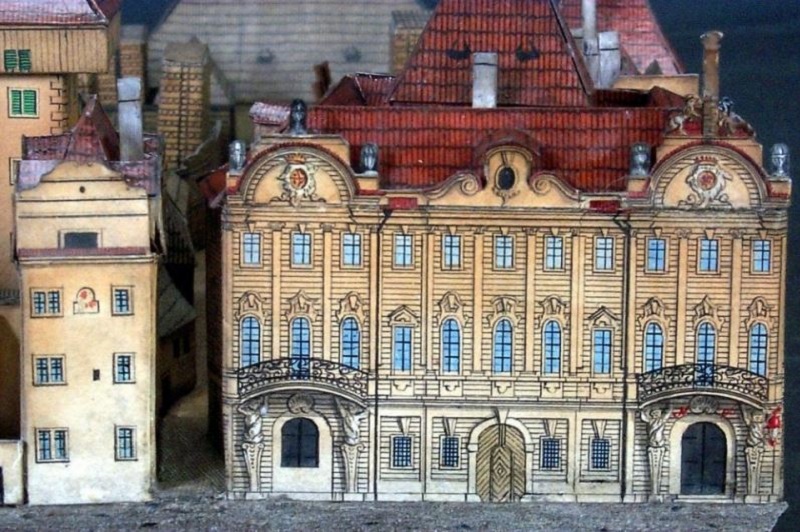
You can peek into some of the buildings and see the interiors. You gain an understating of house plots and adjacent land.
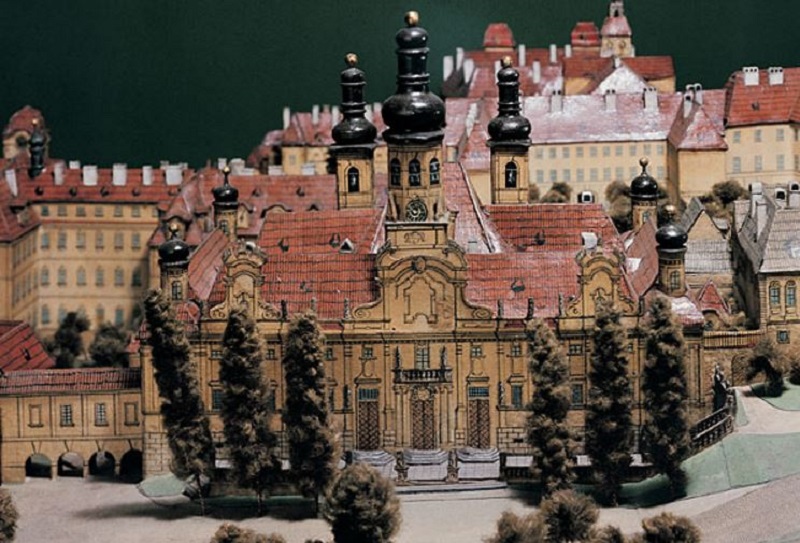
Hradčany. Front of the Loreta. Photo: Miroslav Fokt.
Approximately half of the buildings which are shown in the model were later demolished or radically rebuilt in the real city of Prague. For many researchers and historians who understand the historic buildings were demolished, Langweil’s model is the only witness to their similarities and a point of reference for their research and studies.
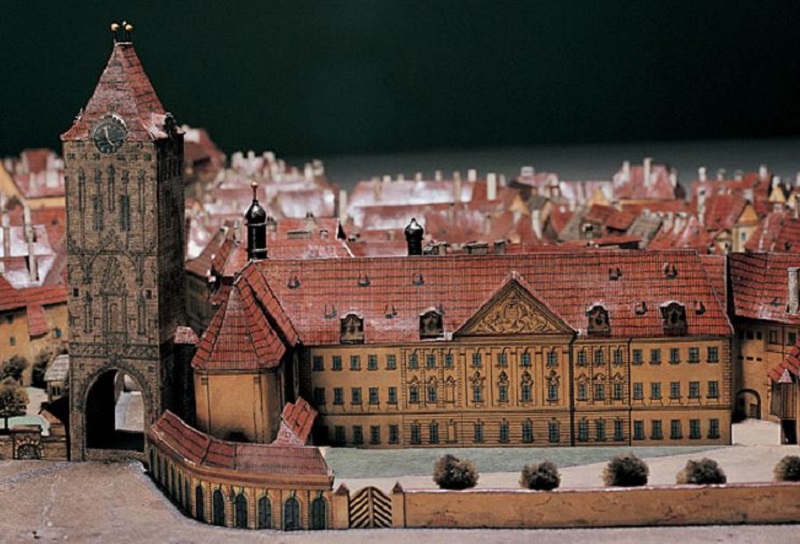
The Old Town. Powder Tower and the King’s Courtyard. Photo: Miroslav Fokt.
The Langweil model was not created in order to document Prague’s appearance at a particular moment but was intended as an original work of art – a three-dimensional picture of the city or a relief veduta.
The realistic depiction of many details with which the town marks time and the lives of its inhabitants are also in keeping with this.
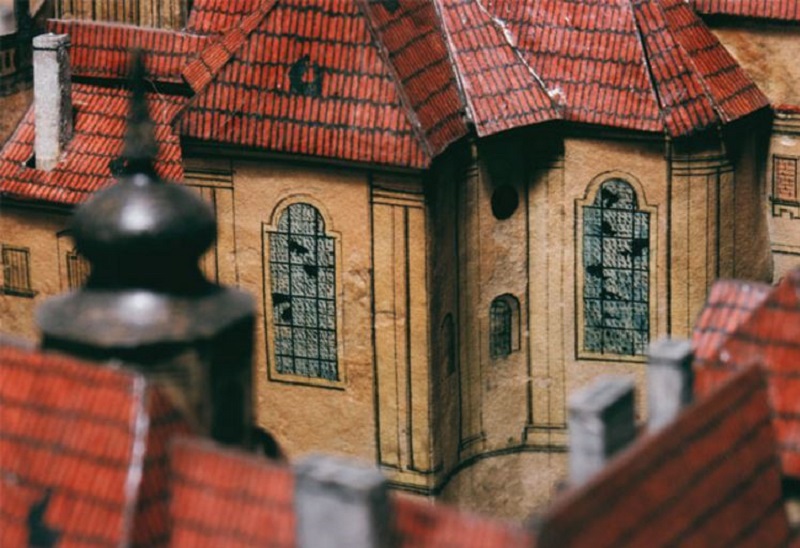
Detail of the model. Hradčany. Broken windows in the Church of St. John of Nepomuk. Photo: Miroslav Fokt.
The facades of buildings do not only show structural and decorative details, such as house signs, frescoes and sundials, but also all sorts of features caught in that moment, such as flaking walls, broken windows and climbing plants.
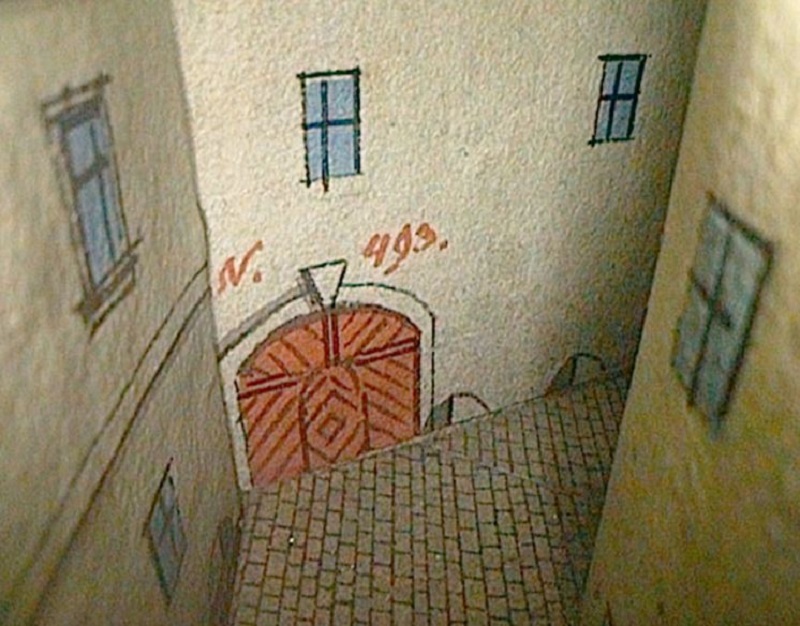
In various courtyards and secluded spots we find stores of barrels, a scene from a pig-slaughter or a ladder leaning against a wall.
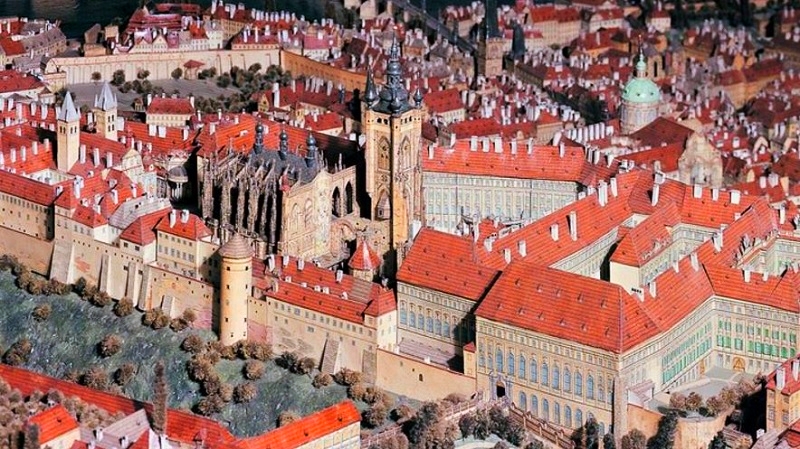
There are no people in the model except for two soldiers standing on guard, as if their unchanging position is part of the street’s appearance.
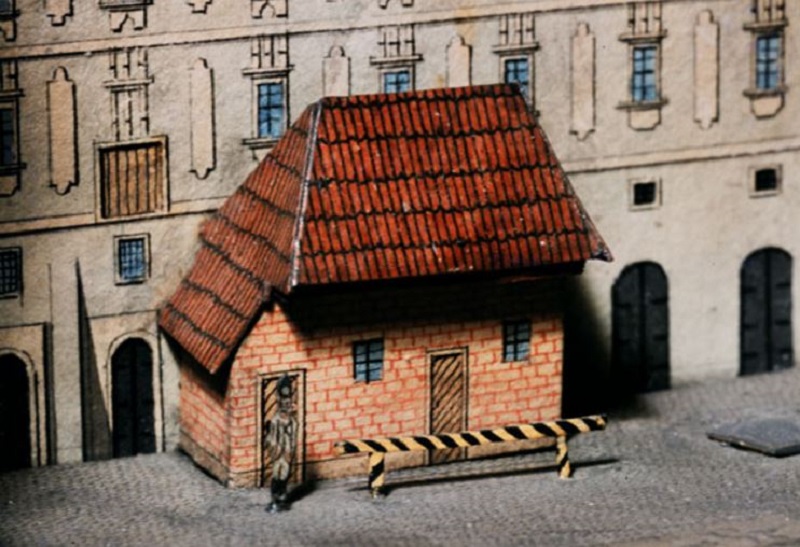
Detail of the model. The Old Town. A soldier on guard in Havelská Street. Photo: Miroslav Fokt.
Antonín Langweil was an assistant at the Prague University library in the Klementinum. He devoted all of his financial resources and free time to his unusual hobby and worked on it every chance he got.
Although his model was admired by scholars, Langweil never found any real support for his model. Sadly, he died in poverty and only left debt and unfinished work, the price of which had seemed very problematic.
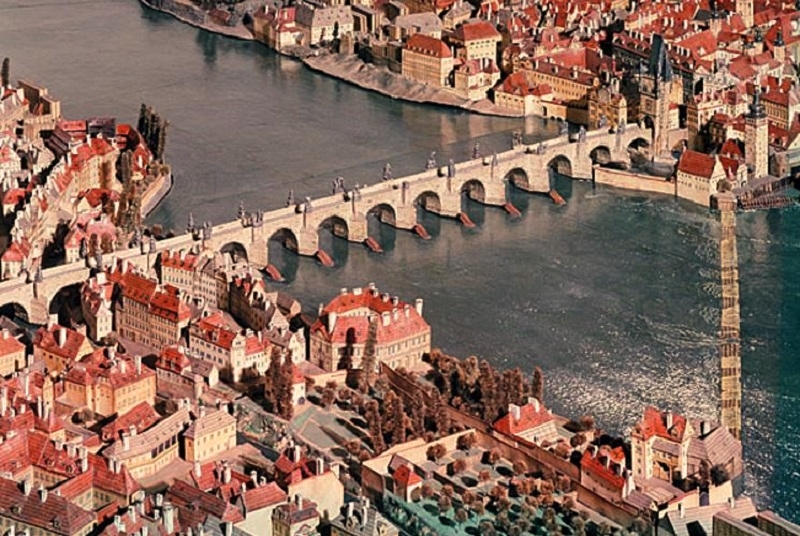
Charles Bridge. Photo: Miroslav Fokt.
In 1840, his model became the property of the National Museum in Prague and after more than a hundred years, it was handed over to the collections of the Museum of the City of Prague. Today it is the most popular part of the historical exhibition.
Only at the present time can we all truly appreciate the true meaning of the Langweil model and the man who dedicated his life to making such a beautiful historical record of the city of Prague.
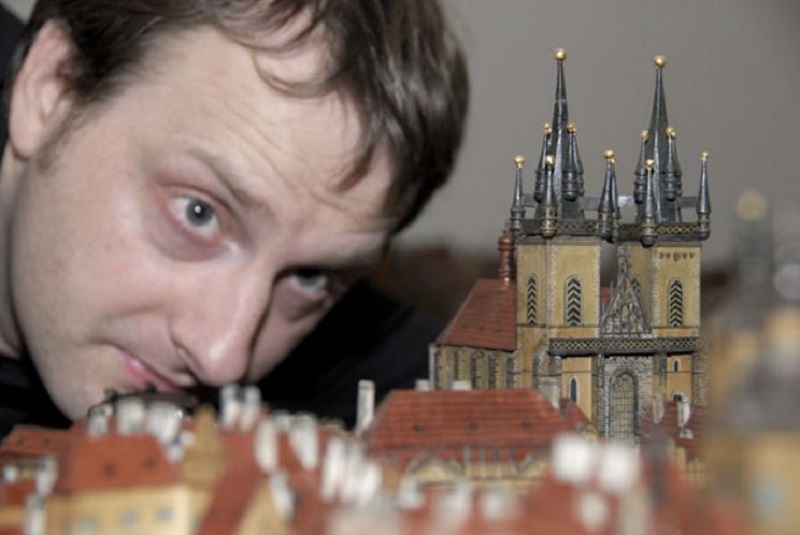
Ing., Bc. Jan Buriánek during photographing the model.
Aside from the thumbnail which is in desperate need to a manicure, take note of the intricate detail of each line, each pen stroke.
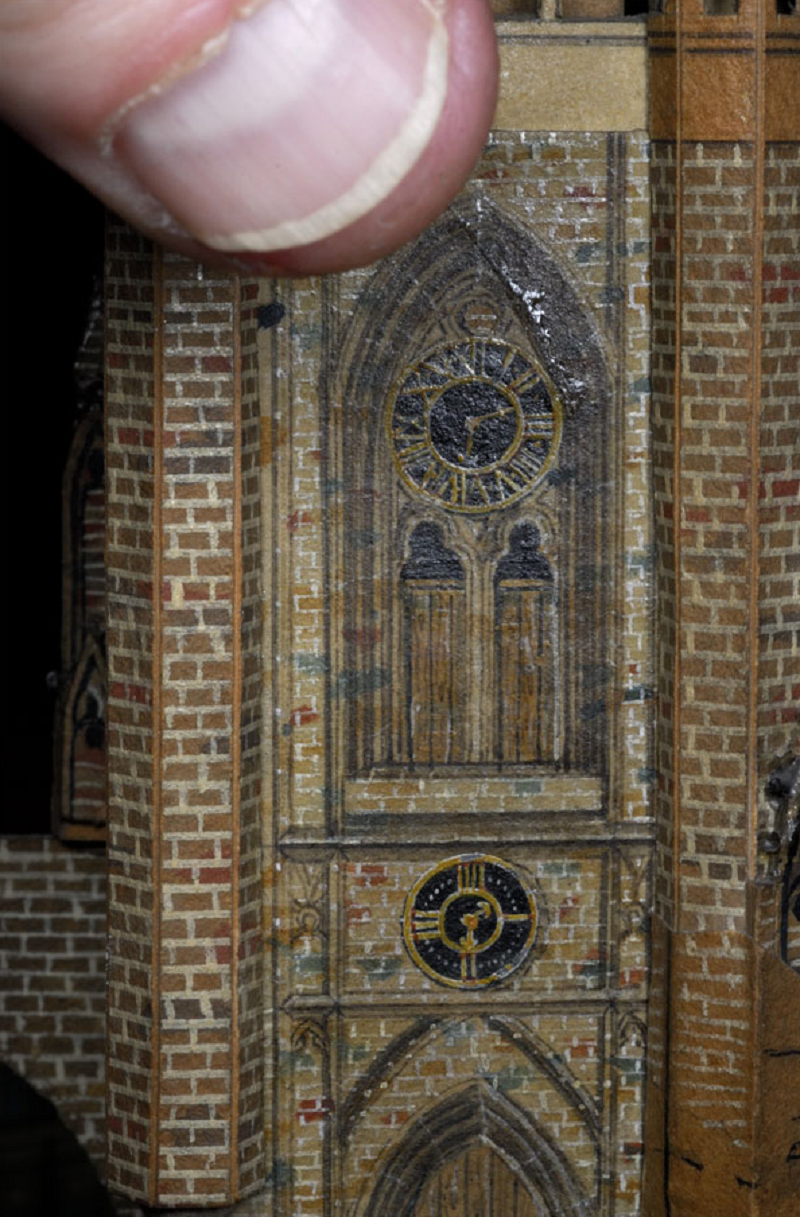
The textures on the buildings contain thin structures of drawing in Indian ink which in their detail exceed hundreds of lines per millimetre.
To understand the incredible detail of this work of art, one must really gain a perspective of the size of it.
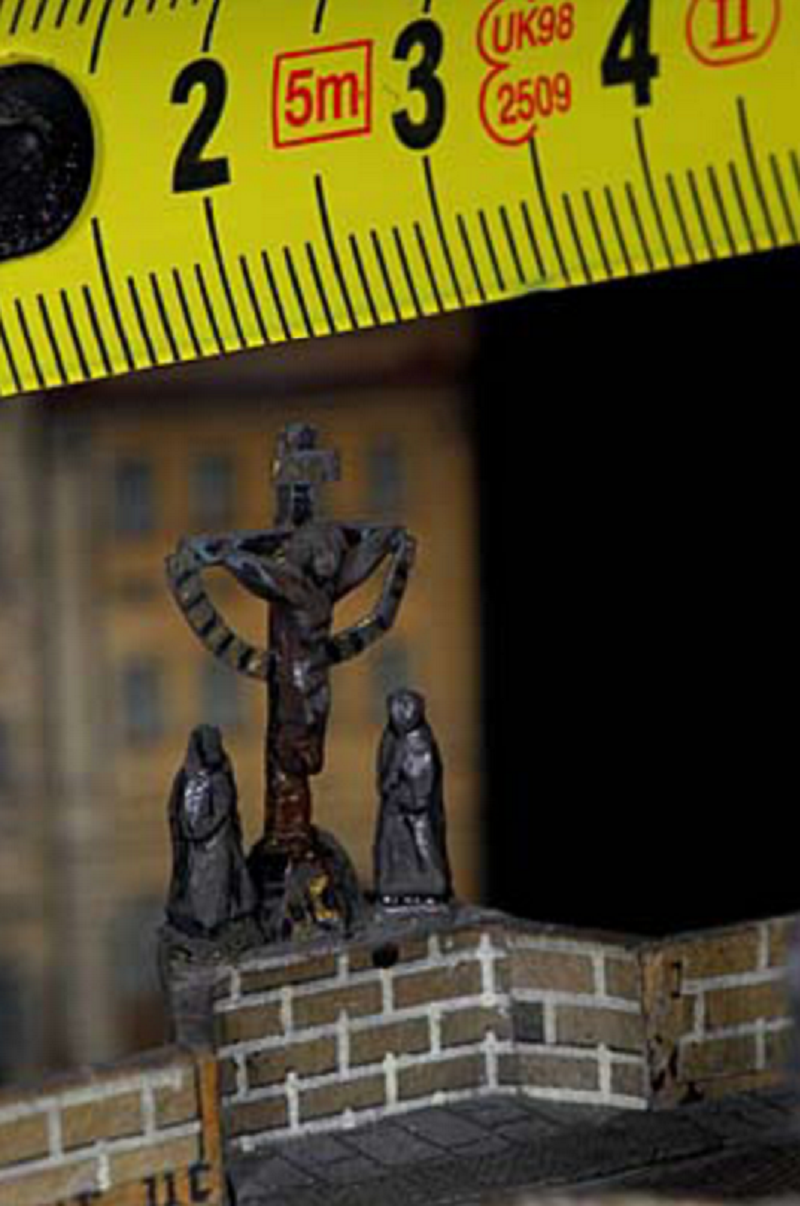
Langweil’s model – Scale.
How tragic it is that we (humans) always seem to be too distracted by the day-to-day stresses of life to ever stop and appreciate, and more importantly, support, those who are passionately driven to create something of beauty, of history, of value to others. Who dedicate all of their free time to allow the fruits of their labors to flow forward. So many artists and writers exist in poverty and with no visible support of their work until they are long gone.
How would have Antonín Langweil’s life been different had the Unversity taken note and supported his work at the time? Would he have built a model of the entire Czech Republic? Of Europe? Of the world? How much creativity is blocked by the need to provide for families, for a roof overhead and food in the belly?
During the eleven years of work on the model, Langweil did exhibit it five times to the public. It was shown in unfinished form.
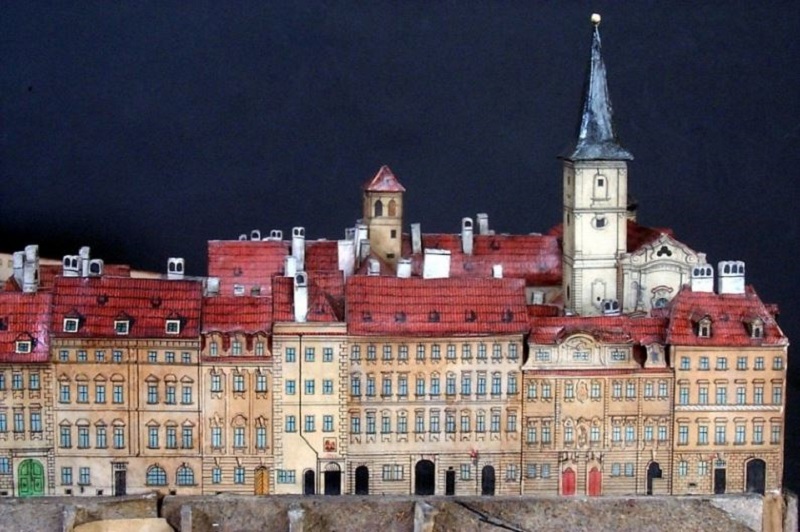
In 1833, Langweil was even invited to exhibit the model at an industrial exhibition held in Prague Castle to mark the visit of Emperor and King Francis I to Prague. After the exhibition ended, Langweil plucked up the courage to write a letter to the monarch asking for financial support in order to complete work on the model but the request was turned down.
Langweil died in June 1837, at the age of 46 and left the model unfinished.
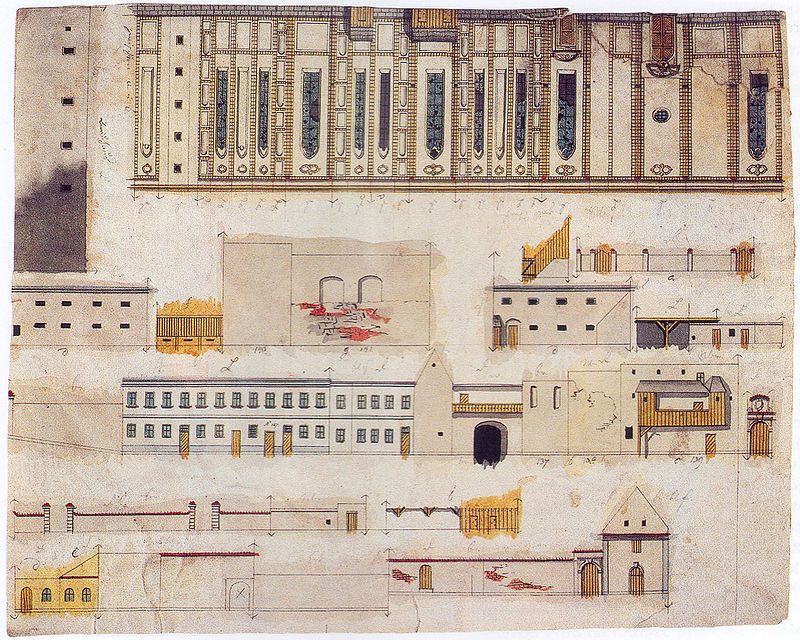
Unfinished part of the model showing Strahov Monastery.
The Model of Prague is a historical testament to the time, a documentary and unusual artwork which can allow us all to time travel back 100 years and see what was, showing many buildings and parts of Prague that no longer exist.
In this video, you can truly grasp the scope of this majestic work of art.
And the poor man who obsessed over it, whose passion drove him to create, night and day… unrecognized during his lifetime.
So sad.
Thank you Mr. Langweil….
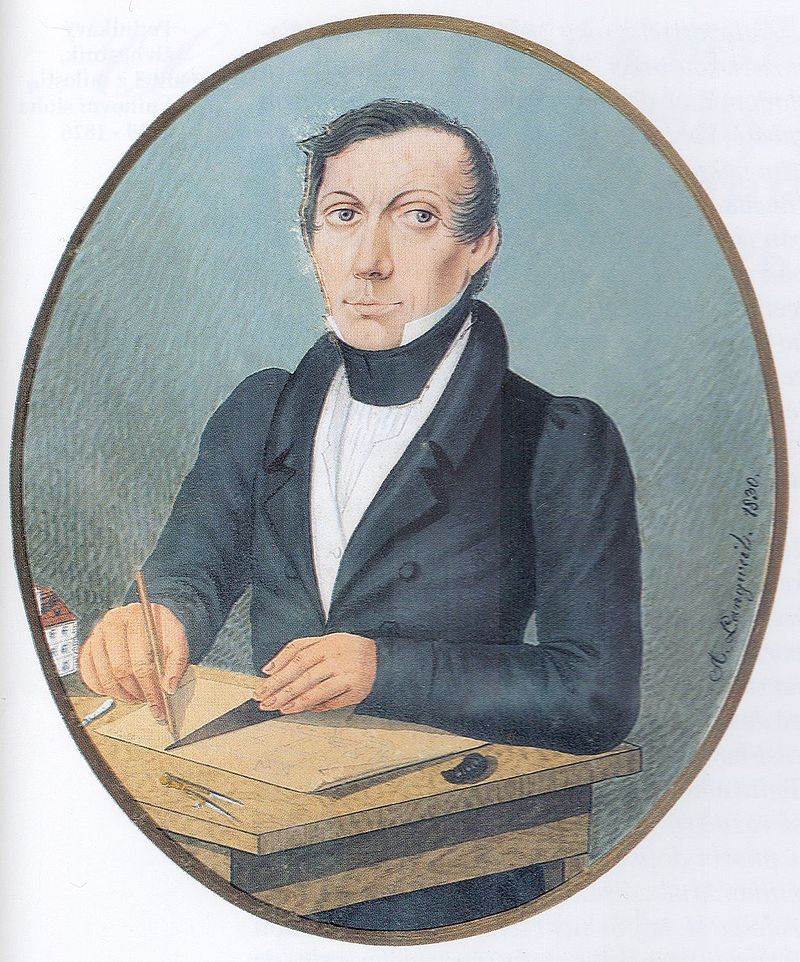
Self-portrait of Antonín Langweil, 1830.
Take a moment today and check out sites like IndieGoGo, Kickstarter or even our sponsors and patrons page to support the artisans and creators who create from a passionate drive to add something of beauty and worth in the world. They’ll thank you and you’ll be contributing to something that one day, may be in the museum.
If you are in the Czech Republic, the model is now on display at the Museum of the City of Prague. You can learn more about the model and see more photos at the official website.
If you have not already subscribed to get TresBohemes.com delivered to your inbox, please use the form below now so you never miss another post.
Remember, we rely solely on your donations to keep the project going.
Become a friend and get our lovely Czech postcard pack.


